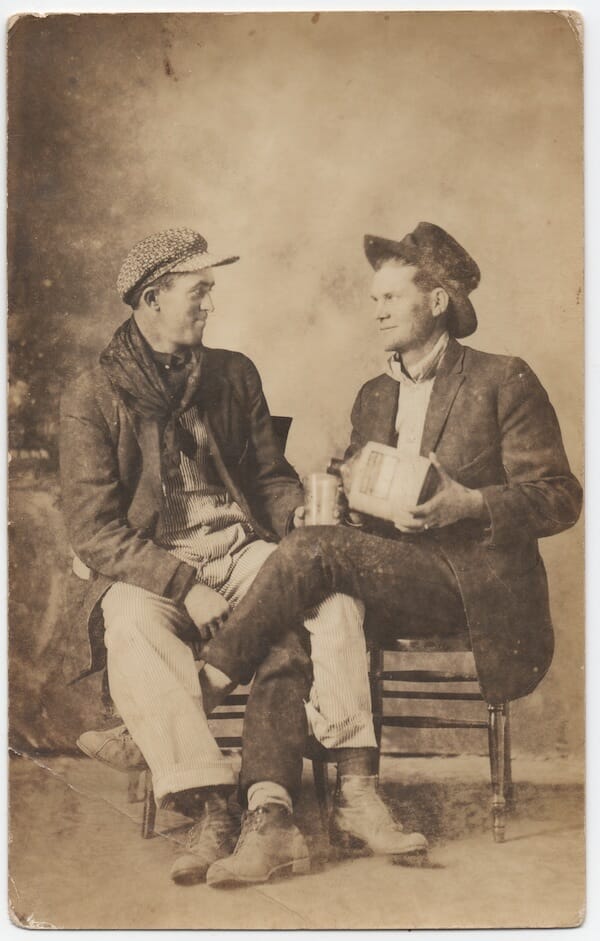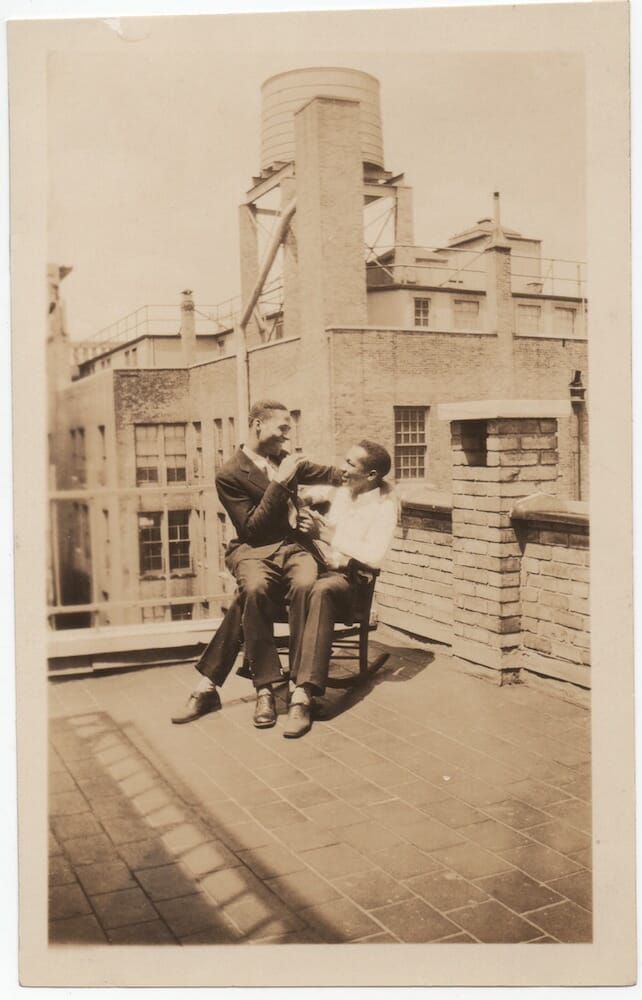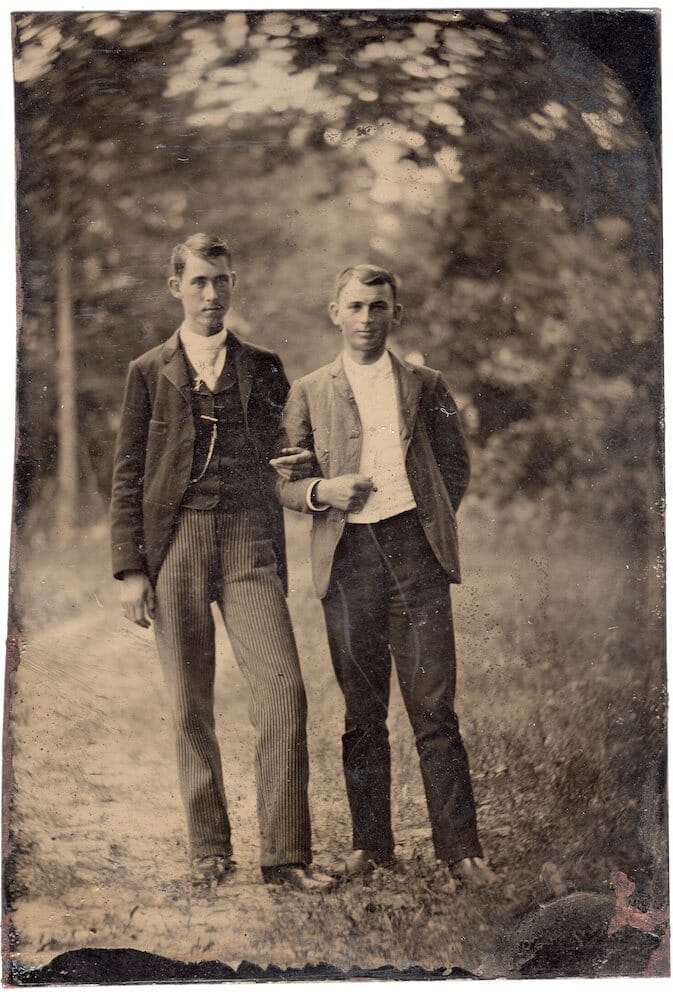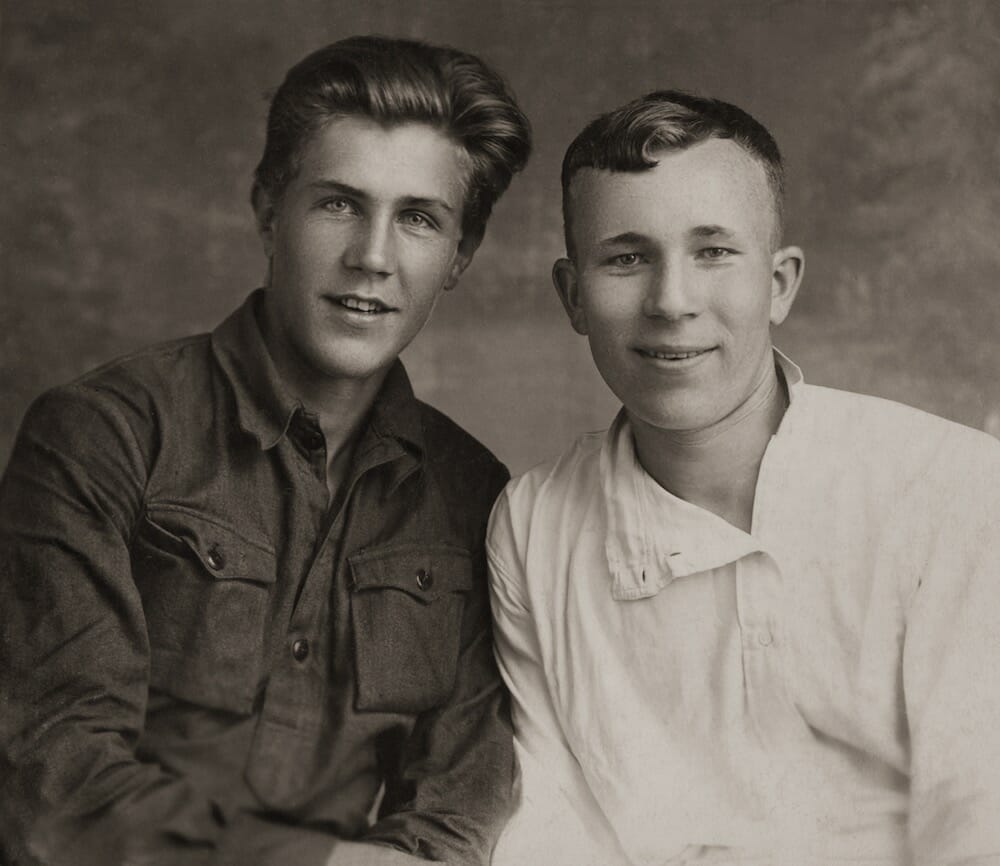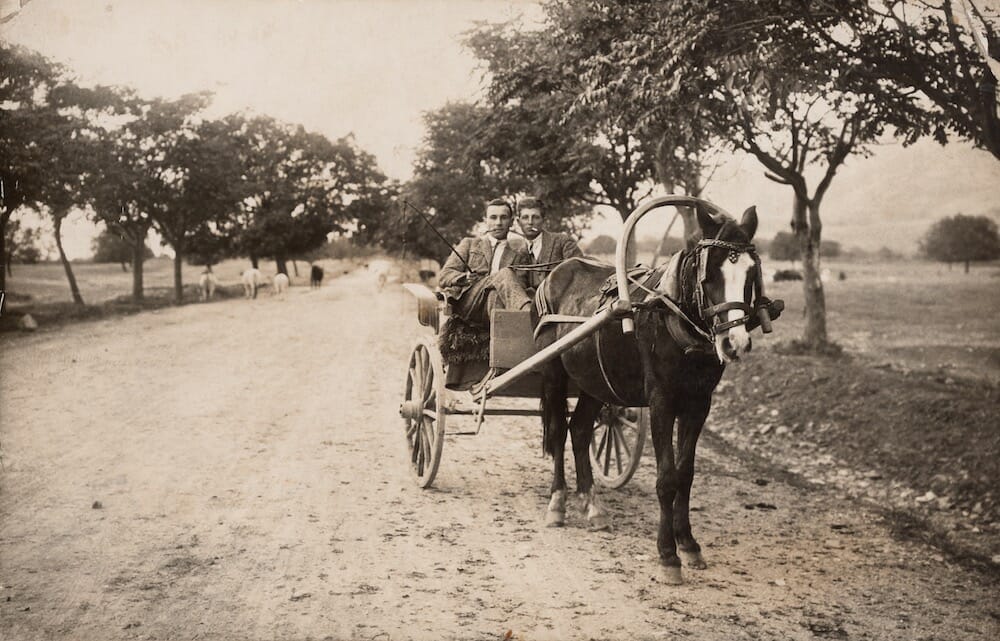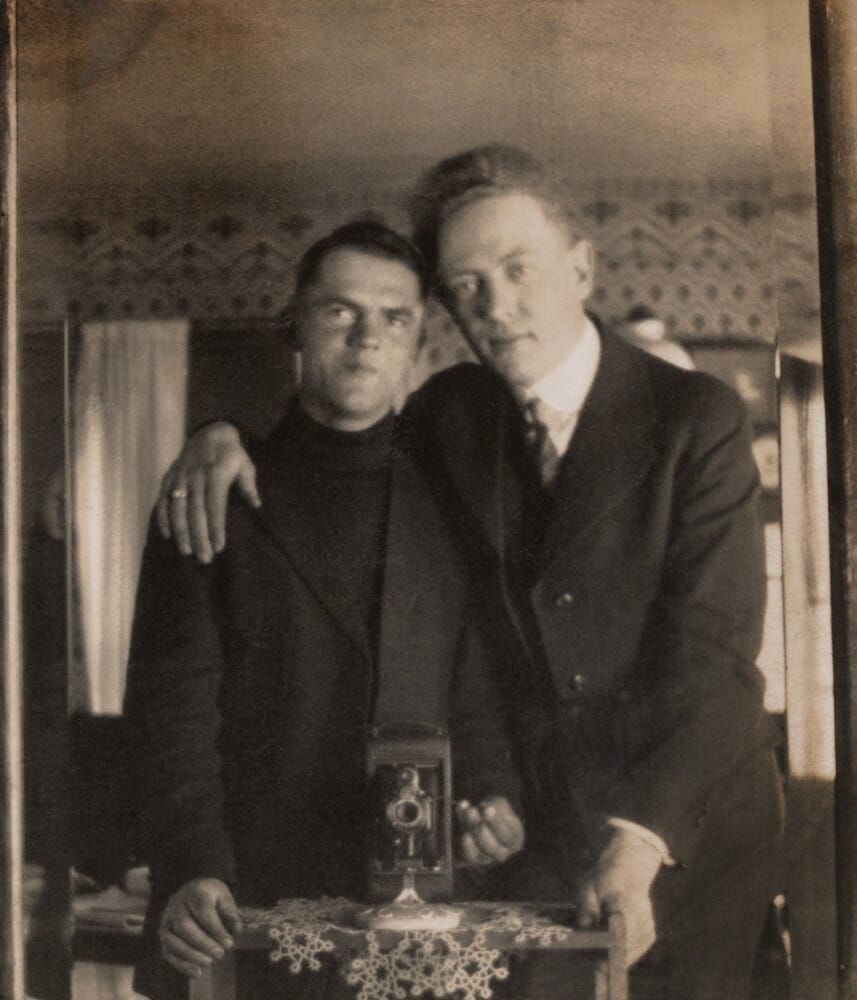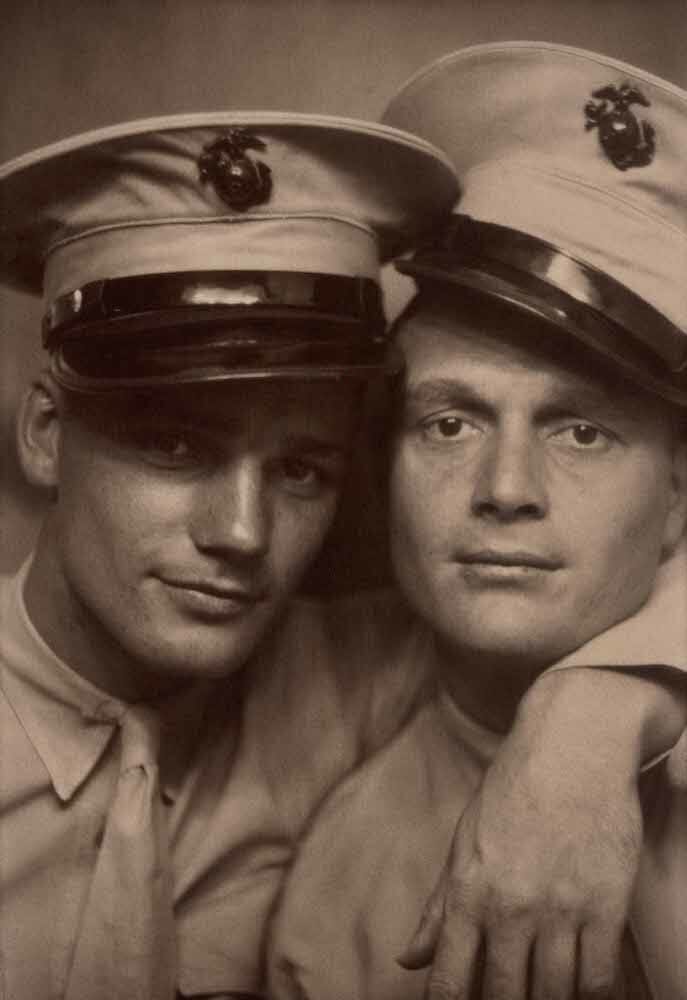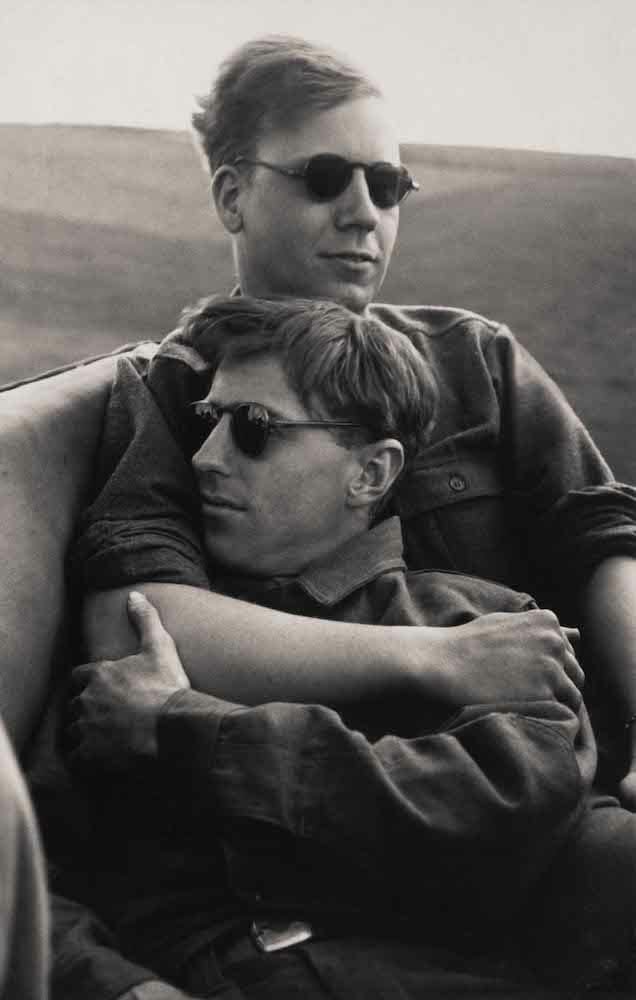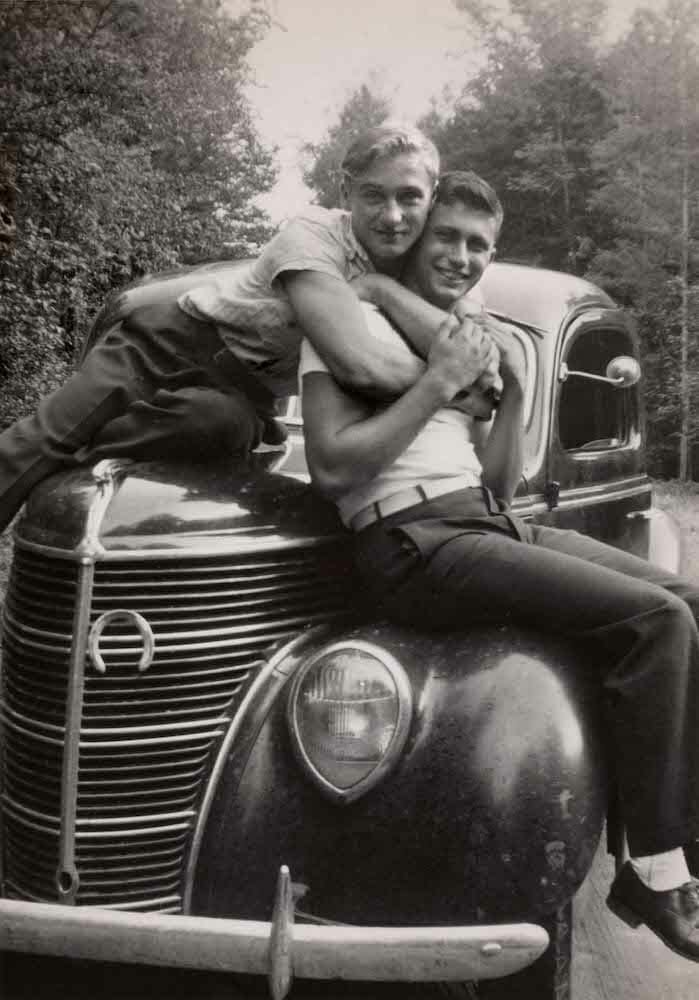I had found this one old tintype of two young, handsome men, sitting side by side, with their legs and arms crossed in towards each other. These guys were holding a sign that read, Bourbon Indiana 1908. My father was born in Bourbon in 1926. Come to find out one of the gentlemen was my great, great uncle. This picture always held such wonderment for me.
This is executive producer David Millbern, sharing how his personal AHA! Moment inspired 100 Years of Men in Love, a documentary following the discoveries made by collectors Neal Treadwell and Hugh Nini. Since 2000, they have collected numerous photos of men in love.
Here, Picture This Post (PTP) talks with Neal Treadwell (NT), Hugh Nini (HN) and David Millbern (DM) about the inspiration behind the documentary, as well as the significance of their discoveries to LGBTQA+ culture.
(PTP) How did the collection come to be a documentary?
(NT/HN)* The Executive Producer of the documentary, David Milbern, saw our book, LOVING: A Photographic History of Men in Love, 1850s - 1950, when it launched in 2020. He reached out to us to discuss a short segment on HERE TV. As time went by, he expanded the project to a feature length documentary.
After stumbling across the first image, what drove you to continue collecting images?
(NT/HN) When we stumbled across that first photo in 2000, we had no expectation that there would ever be a second, much less now over 3500. In the early years we weren't consciously collecting. We continued to run across more photos, before actively searching for them - what we consider “collecting”.
Of the images you discovered, which were you shocked to find?
(NT/HN) We collected some pretty unremarkable photos of a couple who were American soldiers during WWII. There wasn't much in these photos that indicated they were a romantic couple. Then, many months later a photo surfaced of the two them embracing in the snow, wearing rings that they had exchanged, in Austria in 1945. We later discovered that they were from Texas, which is where we're from, and then discovered that they belonged to the 42nd Infantry Division - nicknamed The Rainbow Division. The "rainbow" didn't mean then what it means today. It was activated in 1918 and remains active today.
How do you feel the symbol of the umbrella was significant between the 1860-1920s?
(NT/HN) The umbrella couples would be couples even without the umbrellas. Their expressions indicate that, however the umbrella seems to be an added declaration that they were in love. The modern-day symbol would be the wedding ring.
Why do you feel it is important to highlight the history of both same-sex and interracial relationships?
(NT/HN) It is important because male couples were never depicted as being in love with each other. They were routinely seen through a sexual lens, as criminals, or morally fallen in the eyes of religious leaders. This collection is the missing link to the history of understanding male, as well as female, couples.
Given the risk of many of these images being made public, how do you think many of these photographs were kept safe?
(NT/HN) We know that in the case of the American soldiers during WWII, one of the men kept the photographic mementos of their love in a shoe box, hidden in his closet, in a house he shared with his mother. If these photos had been discovered while they were serving in the military, they would have been dishonorably discharged. In 1992, fearing he was at the end of his life, he passed the shoebox, and the ring he was wearing in the Austrian Alps photo, on to someone he could trust. It was from that person that we acquired about 150 photos of this soldier and the soldier he was in love with. The "somebody" wears the ring every day in honor of this soldier.
What first encouraged you to get involved in this documentary?
(DM) As a kid growing up, I would rummage thru our family’s boxes and albums of old photos. I had found this one old tintype of two young, handsome men, sitting side by side, with their legs and arms crossed in towards each other. These guys were holding a sign that read, Bourbon Indiana 1908. My father was born in Bourbon in 1926. Come to find out one of the gentlemen was my great, great uncle. This picture always held such wonderment for me. Then I happened upon Hugh and Neal’s collection. It became crystal clear that these ancestors were just like me! I wanted to create a documentary that celebrated these courageous men who risked everything to capture their love and commitment.
The quotations highlighted throughout the documentary break up the imagery. As director, why did you make this choice?
(DM) I wanted to create an immersive, personal, experience as the viewer makes their journey thru this film. I feel these quotes from famous gay authors add yet another dimension. I purposely lingered on certain photos so that our audience can have the time to realize the relevance, at the time, fantasize, and celebrate these profound images. These men had the courage to love and the photos they leave behind are as important now as they were then. Their activism in their day, paved the way for the freedom we enjoy today.
Photos courtesy of LOVING The Nini-Treadwell Collection.
To find out how to watch the documentary, visit 100 Years of Men in Love: The Accidental Collection on the Roku website.
*Editor’s Note: Neal Treadwell and Hugh Nini collaborated jointly on these answers
Read how filmmakers make their magic— in their own words. Read “FILMMAKERS SPOTLIGHT— Meet Filmmakers Picture This Post LOVES!” and watch this video for a story preview —
Nominate this for The Picture This Post BEST OF 2022???
Click Readers' Choice!
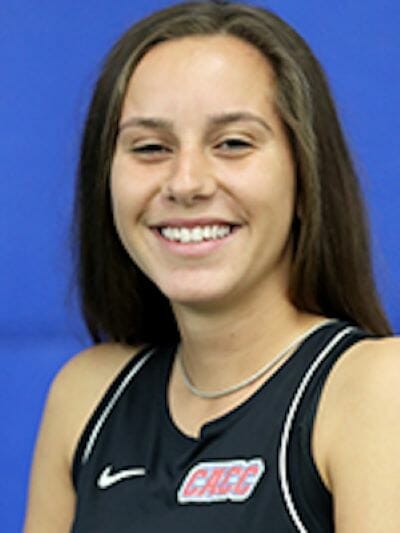
About the Author: LGBTQA+ Editorial Team
As the new LGBTQA+ content curator, Jess Purdy hopes to expand Picture This Post readers’ insight into queer culture, through music, theatre, film and more.
Purdy says, “Picture This Post’s LGBTQA+ focus aims to introduce fresh and unique voices that support the LGBTQA+ community and strive for more equality. As queer themes are further explored in culture and art, Picture This Post will showcase individuals and organizations that continue to push the envelope.”



